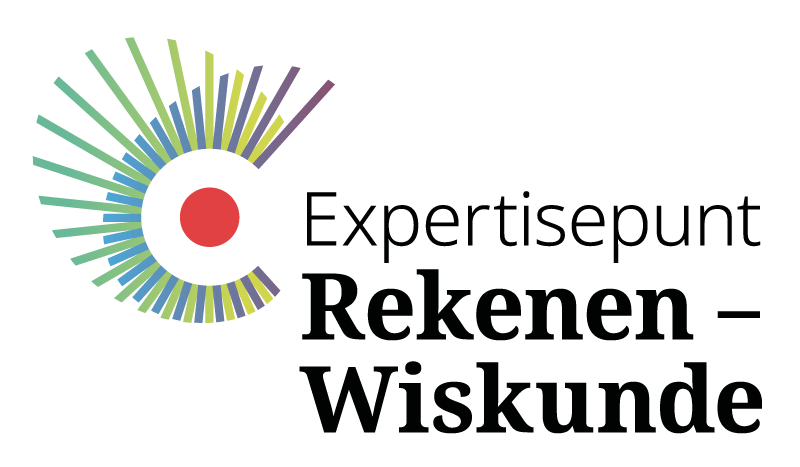Dyscalculie is een leerstoornis die rekenproblemen veroorzaakt. Mensen met dyscalculie hebben moeite met het automatiseren van basisvaardigheden van rekenen en wiskunde, zoals tellen, getallen lezen en schrijven, en het uitvoeren van berekeningen.
Literatuur
- (2003). Brain research and learning sciences (CERI – Center for educational research and innovation – OECD). Mini-symposium on the design of rehabilitation software for dyscalculia (PDF), OECD: Paris: CERI.
- Borghouts, C. (2012). De vertaalcirkel (PDF) Volgens Bartjens, 31(2), 10-11.
- Butterworth, B. (1999). The mathematical brain (PDF). London: Macmillan.
- Butterworth, B. and Laurillard, D. (2010). Low numeracy and dyscalculia: identification and intervention (PDF) ZDM International Journal on Mathematics Education, 42(6), 527- 539.
- Butterworth, B. and Yeo, D. (2004). Dyscalculia Guidance: helping pupils with specific learning difficulties in maths. London: nferNelson Publishing Company Limited.
- Chan, W. W. L., Au, T. K. and Tang, J. (2013). Developmental dyscalculia and low numeracy in Chinese children (PDF) Research in Developmental Disabilities, 34(5), 1613-1622 doi:10.1016/j.ridd.2013.01.030.
- Chinn, S. (Ed.). (2012). International Handbook of Dyscalculia and Mathematical Learning Difficulties (PDF). Routledge.
- Danilov, I. V. and Mihailova, S. (2022). A Case Study on the Development of Math Competence in an Eight-year-old Child with Dyscalculia: Shared Intentionality in Human-Computer Interaction for Online Treatment Via Subitizing (PDF) OBM Neurobiology, 6(2) doi:10.21926/obm.neurobiol.2202122.
- De Goeij, E. (2003). Begeleiding aan het woord. Dyscalculie. (PDF) Panama-Post. Tijdschrift voor nascholing en onderzoek van het reken-wiskundeonderwijs, 22(2), 25-28.
- Desoete, A., Roeyers, H. and De Clercq, A. (2004). Children with mathematics learning disabilities in Belgium (PDF) Journal of Learning Disabilities, 37(1), 62-73.
- Dhingra, K., Aggarwal, R., Garg, A., Pujari, J. and Yadav, D. (2024). Mathlete: an adaptive assistive technology tool for children with dyscalculia (PDF) Disability and Rehabilitation: Assistive Technology, 19(1), 9-15 doi:10.1080/17483107.2022.2134473.
- Dolk, M. and Van Groenestijn, M. (Eds.). (2006). Dyscalculie in discussie (PDF). Utrecht: NVORWO.
- Huijsmans, M. (2021). Explaining variation in mathematics achievement. Characteristics of children with and without mathematical learning difficulties (PDF) (pp. 157). Nijmegen: Radboud Universiteit.
- Kaskens, J. (2017). Rekengesprekken voeren (PDF): Uitgeverij Pica.
- Kucian, K. and Cohen Kadosh, R. (2022). Neurocognitive interventions to foster mathematical learning (PDF). In Handbook of Cognitive Mathematics (Vol. 1-2, pp. 385-411): Springer International Publishing.
- Loosbroek, E. v. (2004). Het Kanaal (92): Dyscalculie als biologisch gegeven (PDF) Panama-Post. Reken-wiskundeonderwijs: onderzoek, ontwikkeling, praktijk, 23(2), 14-16.
- Meijer, J., Buisman, M., Christoffels, I., Groot, A., Jonker, V., Kuijper, S. and Wijers, M. (2018). De rekentoetsen voor leerlingen met ernstige rekenproblemen (ER) (PDF). Amsterdam: Kohnstamm Instituut/ECBO/Universiteit Utrecht.
- Menne, J. (2004). Dyscalculie of dysdidactiek? (PDF).
- Nelissen, J. (2004). Kinderen die niet leren rekenen (PDF) Willem Bartjens, 23(3).
- Nelissen, J. (2024). Dyscalculia in learning mathematics (PDF) Curriculum and Teaching, 39(2) doi:10.7459/ct/390206.
- Ruijssenaars, A. J. J. M., Van Luit, J. E. H. and Van Lieshout, E. C. D. M. (2004). Rekenproblemen en dyscalculie. Theorie, onderzoek, diagnostiek en behandeling. Rotterdam: Lemniscaat.
- Ruijssenaars, A. J. J. M., Van Luit, J. E. H., Van Lieshout, E. C. D. M. and Kroesbergen, E. (2021). Handboek Dyscalculie en rekenproblemen. Een dynamisch ontwikkelingsperspectief (PDF): Lemniscaat B.V.
- Ruijssenaars, W. and Ruijssenaars-Elshoff, C. (2021). Berekend! Van rekenprobleem tot dyscalculie (PDF): Gompel en Svacina.
- Skagerlund, K. and Träff, U. (2016). Number Processing and Heterogeneity of Developmental Dyscalculia: Subtypes With Different Cognitive Profiles and Deficits Journal of Learning Disabilities, 49(1), 36-40 doi:10.1177/0022219414522707.
- Van Groenestijn, M. (2012). Protocol Ernstige RekenWiskunde-problemen en Dyscalculie (ERWD 1) (PDF). Assen: Koninklijke Van Gorcum / NVORWO.
- Van Groenestijn, M., Borghouts, C. and Janssen, C. (2011). Protocol Ernstige RekenWiskunde-problemen en Dyscalculie (ERWD 1) (PDF). Assen: Van Gorcum.
- Van Groenestijn, M., Van Dijken, G. and Janson, D. (2012). Protocol Ernstige RekenWiskunde-problemen en Dyscalculie (2, VO) (PDF). Assen: Koninklijke Van Gorcum / NVORWO.
- Van Groenestijn, M., Van Dijken, G. and Janson, D. (2012). Protocol Ernstige RekenWiskunde-problemen en Dyscalculie (3, MBO) (PDF). Assen: Koninklijke Van Gorcum / NVORWO.
- Van Groenestijn, M. and Vedder, J. (Eds.). (2008). Dyscalculie in discussie, deel 2. Ernstige Reken-Wiskundeproblemen en Dyscalculie.
- Van Loosbroek, E. (2014). Dyscalculie als biologisch gegeven. Het kanaal nummer 92 Panama Post (Online), 23(2), 12-16.
- Van Luit, H. (2004). Als speciale kleuter tel je ook mee! In K. Groenewegen (Ed.), Nationale Rekendagen 2003 (pp. 23-30). Utrecht: Freudenthal instituut.
- Van Luit, H. (2018). Dit is dyscalculie. Achtergrond en aanpak. Houten: LannooCampus.
- Van Luit, H. and Mönch, M. E. (2025). Protocol Dyscalculie. Diagnostiek voor gedragsdeskundingen en rekenprofessionals.
- Van Luit, H. and Ruijssenaars, A. J. J. M. (2004). Dyscalculie, zin en onzin (PDF) Panama-Post. Tijdschrift voor nascholing en onderzoek van het reken-wiskundeonderwijs, 23(2), 3-8.

